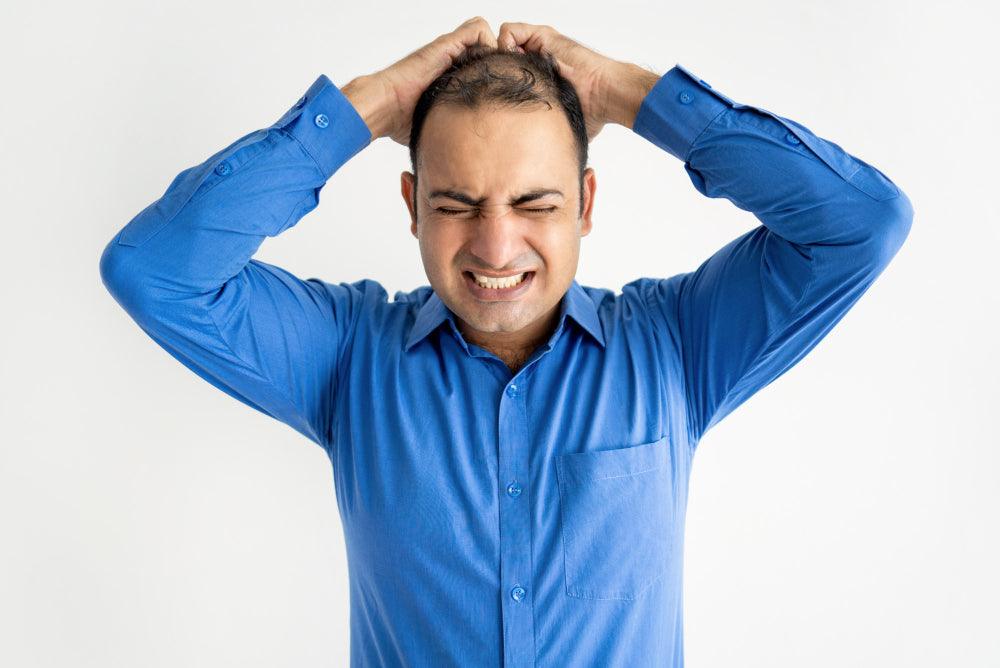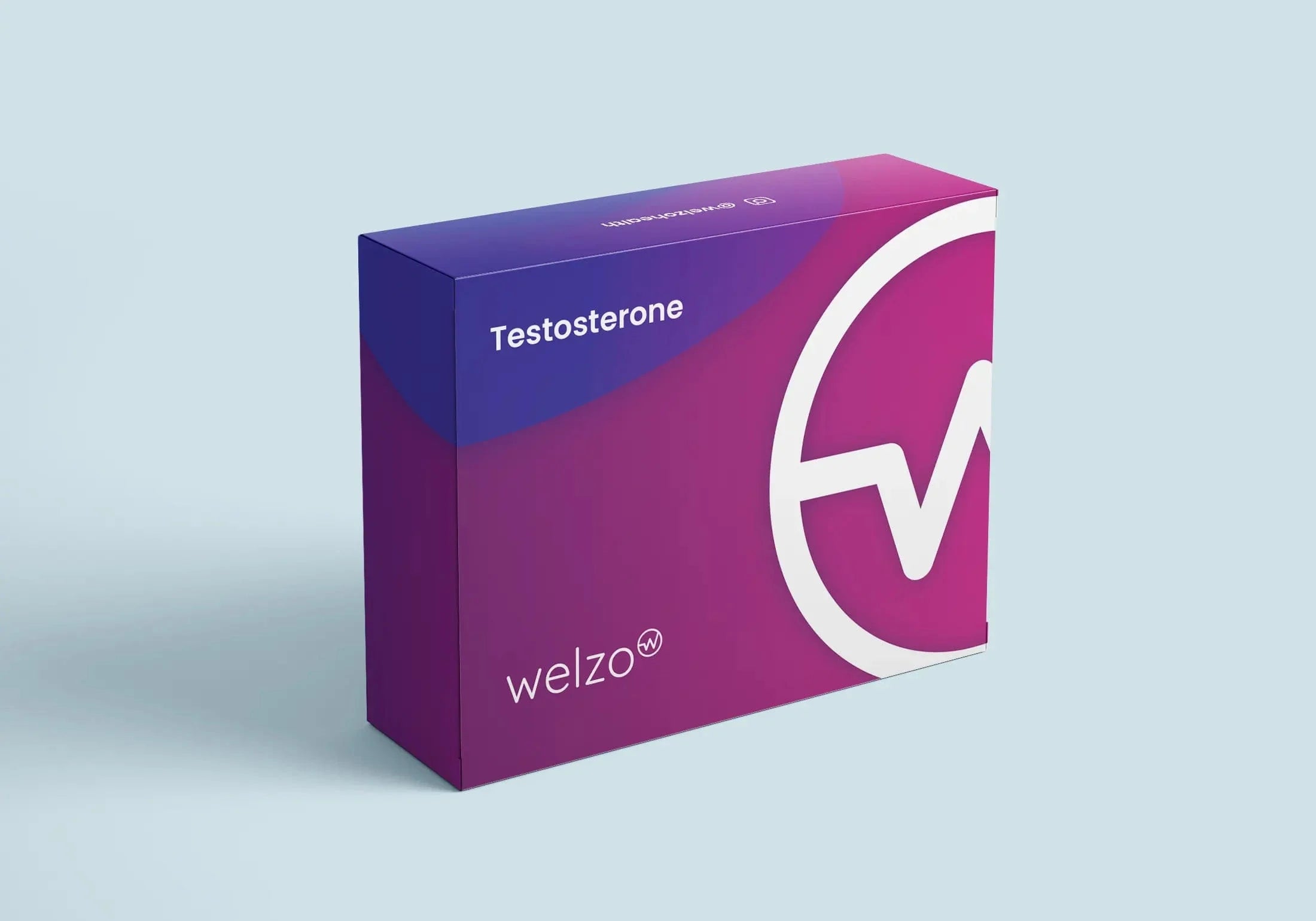Connection Between Testosterone and Hair Loss


The science behind hair growth is both complex and fascinating. At the heart of this process are hair follicles, small sacs in the skin that produce hair. These follicles don't simply sprout hair continuously; instead, they undergo various phases of growth, rest, and shedding. To understand the role testosterone plays in this, we first need to dive deep into the world of hair follicles and their functions. Researchers at the University of Cambridge have shown that the health and cycle of hair follicles are affected by various factors, including hormones, genetics, and environmental factors, says Dr. Jane Stevenson, a renowned dermatologist. For instance, it's well known that exposure to certain chemicals or radiation can alter hair growth. But the genetic and hormonal influences are particularly strong, especially when it comes to androgens like testosterone.
Hair follicles aren't all identical. Their sensitivity to hormones, particularly androgens, can vary across the scalp. This sensitivity is largely governed by genetics. For example, the hair at the back of the head is typically more resistant to androgen-driven hair loss compared to the hair on the temples and crown. Sensitivity to androgens, especially DHT, can lead to the miniaturization of hair follicles. This essentially means that these follicles produce thinner, shorter, and lighter-coloured hair, a process at the heart of male and female pattern baldness.
Hair growth isn't a continuous process. It happens in phases: Anagen (growth phase), Catagen (transitional phase), and Telogen (resting phase). The duration and health of each phase can be affected by hormones, including testosterone. During the Anagen phase, which lasts several years, hair grows actively. The Catagen phase, spanning a few weeks, is a transitional period where the hair follicle shrinks. Lastly, during the Telogen phase, hair rests for a few months and then falls out.
Testosterone is a primary male sex hormone, though it's present in both genders. It's vital for the development of male reproductive tissues, promoting secondary sexual characteristics, and plays a role in libido, muscle mass, and bone density.
In men, testosterone plays a multifaceted role. Beyond its well-known influence on muscle growth, libido, and mood, it affects various physiological and psychological functions. For instance, it has a role in fat distribution, red cell production, and maintaining bone mass. One less discussed but significant aspect of testosterone is its impact on hair growth. This isn't direct but through its more potent derivative, Dihydrotestosterone (DHT).
Testosterone production typically increases during puberty and starts to decline after the age of 30. As men age, they might experience a condition called 'andropause', analogous to female menopause, characterised by a drop in testosterone levels. This declining testosterone can lead to various symptoms, including changes in hair growth patterns, says Dr. Michael Parker.
Dihydrotestosterone, commonly known as DHT, is a powerful derivative of testosterone. It forms when the enzyme 5-alpha reductase converts testosterone to DHT in various tissues, including the skin, liver, and prostate gland.
The conversion of testosterone to DHT involves the enzyme 5-alpha reductase. This enzyme is present in various body tissues and is particularly abundant in the prostate, skin, and hair follicles.
While DHT is notorious for its role in hair loss, it has other physiological effects. For instance, it's crucial for the development of male genitalia during embryogenesis and contributes to prostate growth and sebaceous gland activity.
DHT binds to receptors in hair follicles, especially in those sensitive to it. Over time, this binding can lead to the miniaturization of the follicle, resulting in thinner and shorter hairs.
When DHT attaches to androgen receptors in hair follicles, it disrupts the normal growth cycle. This leads to a shortened Anagen phase and a prolonged Telogen phase. Over successive cycles, the hair becomes shorter, finer, and lighter until the follicle no longer produces visible hair.
While both testosterone and DHT are androgens, their impact on hair loss is distinct. Testosterone itself has a minimal direct effect on hair follicles. It's when it's converted to DHT that the effects become pronounced, especially in those with a genetic predisposition to hair loss. This is why treatments for androgenic alopecia often target the conversion of testosterone to DHT or the action of DHT itself on hair follicles.

Buy Testosterone Blood test online here.
Baldness, often associated with ageing in men, has long been linked to various myths about masculinity. One of the most enduring misconceptions is that men with higher testosterone levels are more prone to baldness, thereby making them 'more masculine'. However, science paints a more nuanced picture. "The idea that bald men are more virile because of elevated testosterone levels is a myth; the reality is more complex than a simple hormone level measurement", says Dr. Phillip Harris, a trichologist based in London.
While it's true that testosterone plays a role in hair loss, particularly male pattern baldness, it's not accurate to say that higher testosterone directly results in baldness. Many studies have shown that bald men don't necessarily have more testosterone than men with a full head of hair. The key lies in the sensitivity of hair follicles to DHT, a testosterone derivative. It's essential to understand that just because two things occur together, it doesn't mean one causes the other.
While hormones play a significant role, other factors can lead to hair loss. Genetics is a primary factor, dictating how sensitive your hair follicles are to hormones. Other contributors include stress, certain medications, poor diet, and underlying health conditions like thyroid disorders.
Testosterone is not exclusive to males. Women produce it too, albeit in lower amounts. In females, testosterone supports various functions like maintaining bone mass, regulating mood, and even influencing hair growth. However, just like in men, its role in hair health isn't straightforward.
Female Pattern Hair Loss (FPHL) is the female counterpart of male pattern baldness. While the patterns of hair loss differ between genders, hormones, particularly androgens, play a role in FPHL. Some women might experience hair thinning due to increased sensitivity to these male hormones. "It's essential to note that FPHL can be influenced by multiple factors, including hormones, genetics, and age", suggests Dr. Elaine Thomas, a dermatologist specialising in female hair loss.
Estrogen, a primary female hormone, also has a say in hair health. Generally, estrogen promotes healthy hair growth by extending the anagen phase. It's why some women notice thicker hair during pregnancy when estrogen levels spike. Conversely, dropping levels of estrogen during menopause can lead to hair thinning.
Some treatments aim to prevent hair loss by inhibiting testosterone's conversion to DHT. These therapies can be effective in slowing or reversing hair loss, but they come with potential drawbacks. While they can reduce the influence of DHT on hair follicles, they might also lead to unwanted side effects related to suppressed testosterone levels.
Testosterone reduction therapies can lead to various side effects, including reduced libido, potential depression, fatigue, and even metabolic changes. "While these treatments can be effective, they're not without risks. It's essential for patients to be fully informed before deciding on such a course", warns Dr. Steven Mitchell, an endocrinologist in Manchester.
For those wary of hormone-altering treatments, various alternative treatments are available. Minoxidil, a topical treatment, and low-level laser therapy have shown promise in promoting hair growth. Additionally, hair transplants, while invasive, offer a more permanent solution. Each treatment has its pros and cons, so it's crucial to consult with a specialist to find the most suitable option.
Hair loss isn't always a sign of high testosterone. While testosterone, specifically DHT (a derivative), plays a role in male pattern baldness, there are many other causes of hair loss, such as genetics, stress, diet, and other underlying health conditions.
Yes, women with elevated testosterone levels can experience more hair loss, especially if they have a condition called polycystic ovary syndrome (PCOS). However, it's essential to note that hair loss in women can also arise from various other causes, including hormonal imbalances, stress, and genetics.
Addressing hair loss related to testosterone requires a comprehensive approach. Consulting with a dermatologist or trichologist is the first step. They may recommend treatments like finasteride, which inhibits DHT, or minoxidil, which stimulates hair growth. However, always be informed of potential side effects.
No, not all men with elevated testosterone levels will go bald. Baldness primarily depends on the genetic sensitivity of hair follicles to DHT, a derivative of testosterone. A man can have high testosterone levels but not experience hair loss if his follicles are not genetically predisposed to DHT sensitivity.
Balancing testosterone naturally involves maintaining a healthy lifestyle. This includes: - Consuming a balanced diet rich in zinc, biotin, and omega-3 fatty acids. - Engaging in regular exercise, which can help regulate hormone levels. - Managing stress, as chronic stress can alter hormone production. - Avoiding excessive alcohol and tobacco use.
It's a common belief that men with more body hair are more prone to baldness, but the two aren't directly linked. While both body hair and scalp hair growth are influenced by androgens (like testosterone and DHT), a man can have abundant body hair and a full head of hair or vice versa, largely due to genetics.
Certain foods might help reduce DHT production or combat its effects: - Green tea contains antioxidants that may inhibit DHT production. - Foods rich in L-lysine, like fish, beans, and lean meats, can potentially block DHT. - Soy products contain phytoestrogens, which might counteract DHT. - Pumpkin seeds have a compound called delta-7 sterine that can block DHT build-up. However, always consult with a nutritionist or healthcare professional before making significant dietary changes.
Genetics is a significant factor in hair loss, determining how sensitive your hair follicles are to DHT. If men in your family have experienced male pattern baldness, you might be more likely to as well. Essentially, it's a combination of genetics and hormonal activity that dictates whether an individual will experience hair loss.
Chronic stress can lead to a type of hair loss called telogen effluvium. Stress pushes hair follicles into the resting phase prematurely, leading to increased shedding after a few months.
Deficiencies in essential nutrients, like iron, vitamin D, and biotin, can negatively impact hair health and contribute to hair loss.
Thyroid disorders, autoimmune diseases, and certain medications, such as chemotherapy drugs, can lead to hair loss. It's vital to consult with a doctor if you notice sudden or unexplained hair shedding.
Treatments like finasteride and minoxidil can help combat hair loss by either blocking DHT production or promoting hair growth, respectively.
Modern hair transplantation techniques, such as FUE (Follicular Unit Extraction), offer natural-looking results with minimal scarring.
Stem cell research holds potential for hair regrowth. Scientists are exploring ways to clone hair follicles and promote hair growth using stem cells, providing hope for many experiencing hair loss.
Hair loss is multifaceted, with causes ranging from genetics and hormones to stress and nutrition. A holistic approach, considering all potential factors and consulting professionals, is crucial for effective management. Individualised solutions, rather than one-size-fits-all treatments, offer the best outcomes for those seeking to address their hair concerns.










Plus get the inside scoop on our latest content and updates in our monthly newsletter.